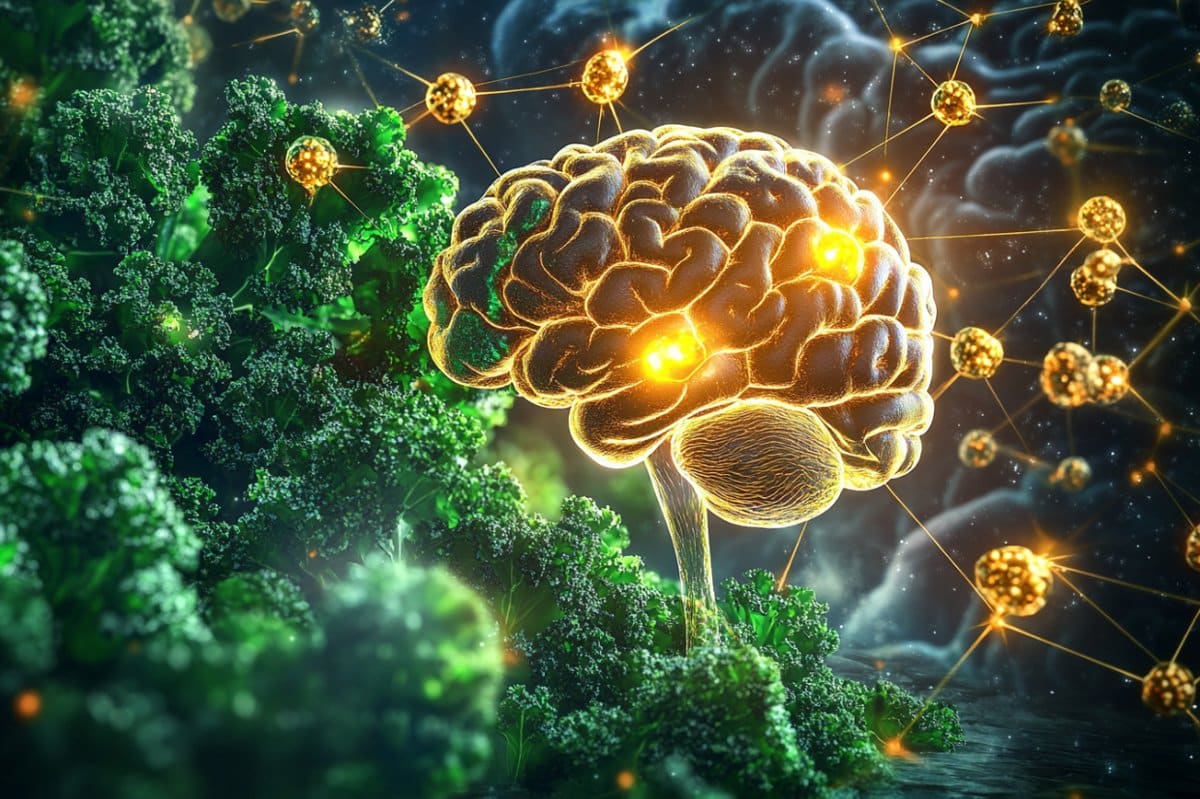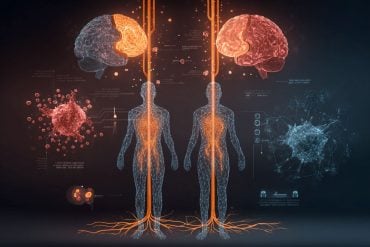Summary: A natural antioxidant found in foods like kale and berries, kaempferol, may help protect nerve cells and shows promise as a treatment for ALS and dementia. Researchers found that it improves energy production and eases stress within nerve cells, helping maintain muscle function and slow degeneration.
However, the body absorbs kaempferol poorly, and massive quantities would be needed for therapeutic effects through diet alone. Scientists are now developing lipid-based nanoparticles to deliver the compound more effectively to the brain and nervous system.
Key Facts:
- Neuroprotective Effects: Kaempferol boosts energy production and reduces cell stress in ALS-affected neurons.
- Absorption Challenge: The body poorly absorbs dietary kaempferol, limiting its therapeutic potential.
- Nanoparticle Delivery: Researchers aim to encapsulate kaempferol in lipid nanoparticles to improve absorption and target neurons.
Source: University of Missouri
A natural compound found in everyday fruits and vegetables may hold the key to protecting nerve cells — and it’s showing promise as a potential treatment for ALS and dementia, according to new research from the University of Missouri.
“It’s exciting to discover a naturally occurring compound that may help people suffering from ALS or dementia,” Smita Saxena, a professor of physical medicine and rehabilitation at the School of Medicine and lead author of the study, said.

“We found this compound had a strong impact in terms of maintaining motor and muscle function and reducing muscle atrophy.”
The study discovered that kaempferol, a natural antioxidant found in certain fruits and vegetables, such as kale, berries and endives, may support nerve cell health and holds promise as a potential treatment for ALS.
n lab-grown nerve cells from ALS patients, the compound helped the cells produce more energy and eased stress in the protein-processing center of the cell called the endoplasmic reticulum. Additionally, the compound improved overall cell function and slowed nerve cell damage.
Researchers found that kaempferol worked by targeting a crucial pathway that helps control energy production and protein management — two functions that are disrupted in individuals with ALS.
“I believe this is one of the first compounds capable of targeting both the endoplasmic reticulum and mitochondria simultaneously,” Saxena said. “By interacting with both of these components within nerve cells, it has the potential to elicit a powerful neuroprotective effect.”
The challenge
The catch? The body doesn’t absorb kaempferol easily, and it could take a large amount to see real benefits in humans. For instance, an individual with ALS would need to consume at least 10-11 pounds of kale in a day to obtain a beneficial dose.
“Our bodies don’t absorb kaempferol very well from the vegetables we eat,” Saxena said.
“Because of this, only a small amount reaches our tissues, limiting how effective it can be. We need to find ways to increase the dose of kaempferol or modify it so it’s absorbed into the bloodstream more easily.”
Another hurdle is getting the compound into the brain. The blood-brain barrier — a tightly locked layer of cells that blocks harmful substances — also makes it harder for larger molecules like kaempferol to pass through.
What’s next?
Despite its challenges, kaempferol remains a promising candidate for treating ALS, especially since it works even after symptoms start. It also shows potential for other neurodegenerative diseases including Alzheimer’s and Parkinson’s.
To make the compound easier for the body to absorb, Saxena’s team at the Roy Blunt NextGen Precision Health building is exploring ways to boost its uptake by neurons.
One promising approach involves packaging lipid-based nanoparticles — tiny spherical particles made of fats that are commonly used in drug delivery.
“The idea is to encapsulate kaempferol within lipid-based nanoparticles that are easily absorbed by the neurons,” Saxena said.
“This would target kaempferol to neurons to greatly increase its beneficial effect.”
The team is currently generating the nanoparticles with hopes of testing them by the end of the year.
About this Alzheimer’s disease and ALS research news
Author: Sara Diedrich
Source: University of Missouri
Contact: Sara Diedrich – University of Missouri
Image: The image is credited to Neuroscience News
Original Research: Open access.
“Kaempferol enhances ER-mitochondria coupling and protects motor neurons from mitochondrial dysfunction and ER stress in C9ORF72-ALS” by Smita Saxena et al. Acta Neuropathologica Communications
Abstract
Kaempferol enhances ER-mitochondria coupling and protects motor neurons from mitochondrial dysfunction and ER stress in C9ORF72-ALS
Repeat expansions in the C9ORF72 gene are a frequent cause of amyotrophic lateral sclerosis (ALS) and frontotemporal dementia. Considerable progress has been made in identifying C9ORF72-mediated disease and resolving its underlying etiopathogenesis.
The contributions of intrinsic mitochondrial deficits as well as chronic endoplasmic reticulum stress to the development of the C9ORF72-linked pathology are well established.
Nevertheless, to date, no cure or effective therapy is available, and thus attempts to find a potential drug target, have received increasing attention.
Here, we investigated the mode of action and therapeutic effect of a naturally occurring dietary flavanol, kaempferol in preclinical rodent and human models of C9ORF72-ALS.
Notably, kaempferol treatment of C9ORF72-ALS human patient-derived motor neurons/neurons, resolved mitochondrial deficits, promoted resiliency against severe ER stress, and conferred neuroprotection.
Treatment of symptomatic C9ORF72 mice with kaempferol, normalized mitochondrial calcium uptake, restored mitochondria function, and diminished ER stress.
Importantly, in vivo, chronic kaempferol administration ameliorated pathological motor dysfunction and inhibited motor neuron degeneration, highlighting the translational potential of kaempferol.
Lastly, in silico modelling identified a novel kaempferol target and mechanistically the neuroprotective mechanism of kaempferol is through the iP3R-VDAC1 pathway via the modulation of GRP75 expression.
Thus, kaempferol holds great promise for treating neurodegenerative diseases where both mitochondrial and ER dysfunction are causally linked to the pathophysiology.






